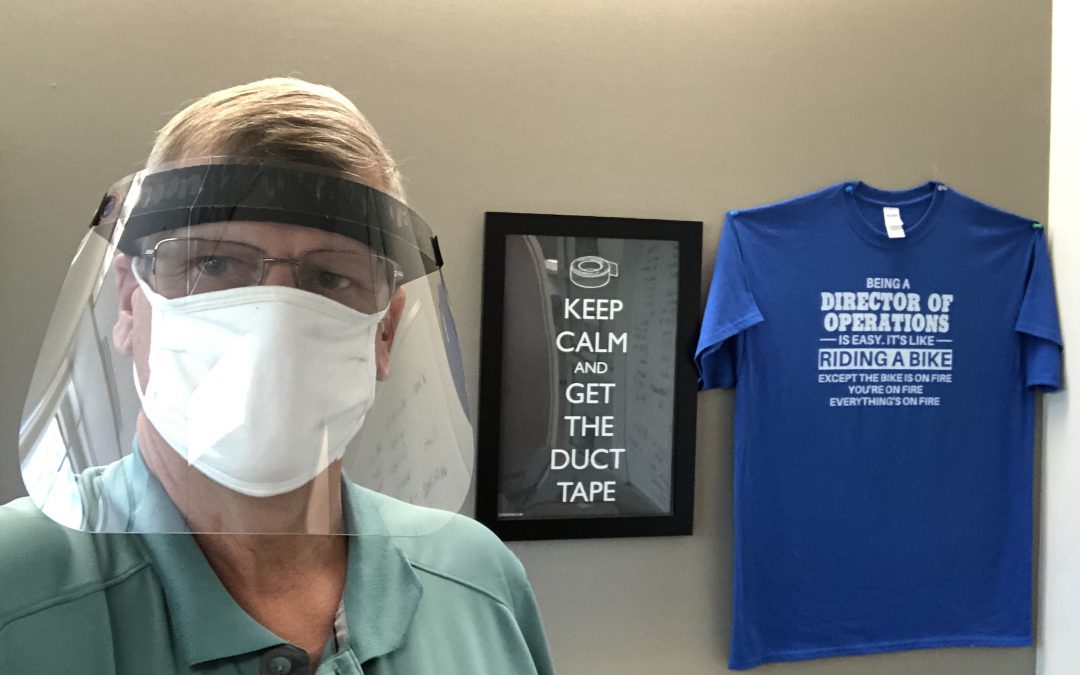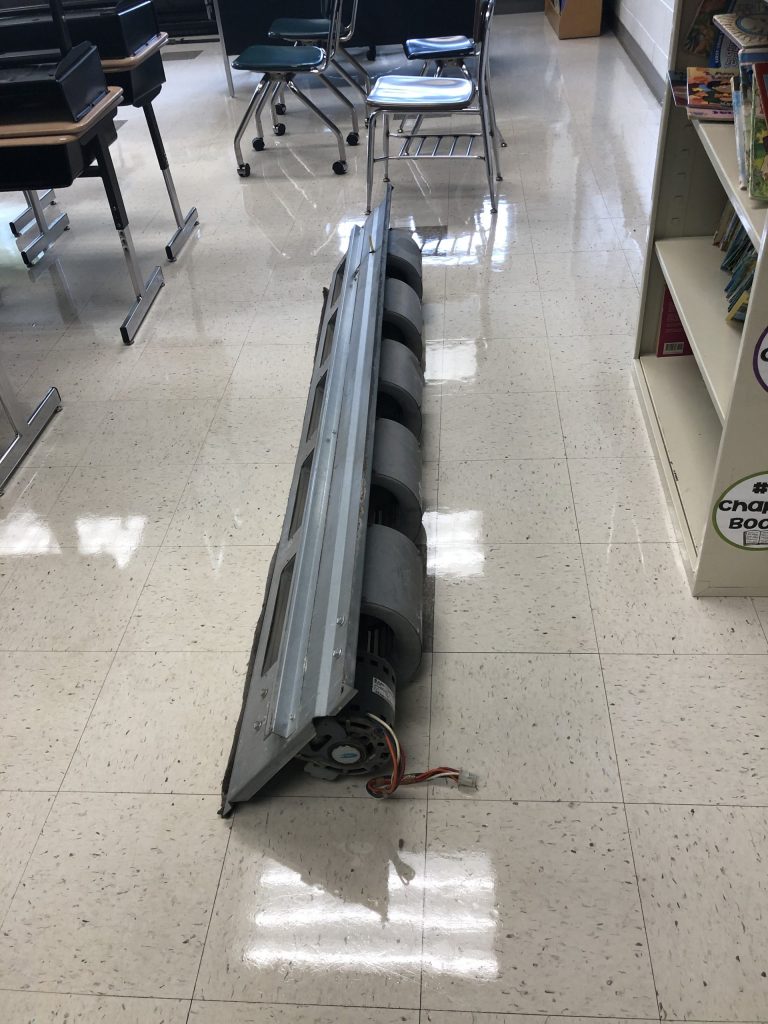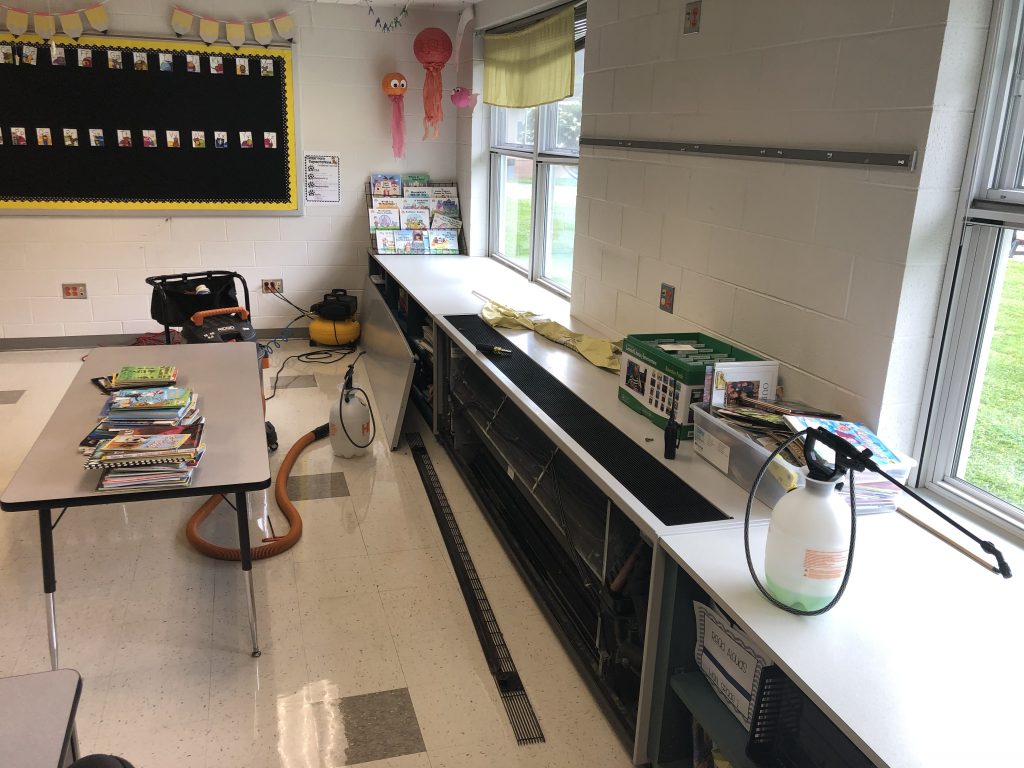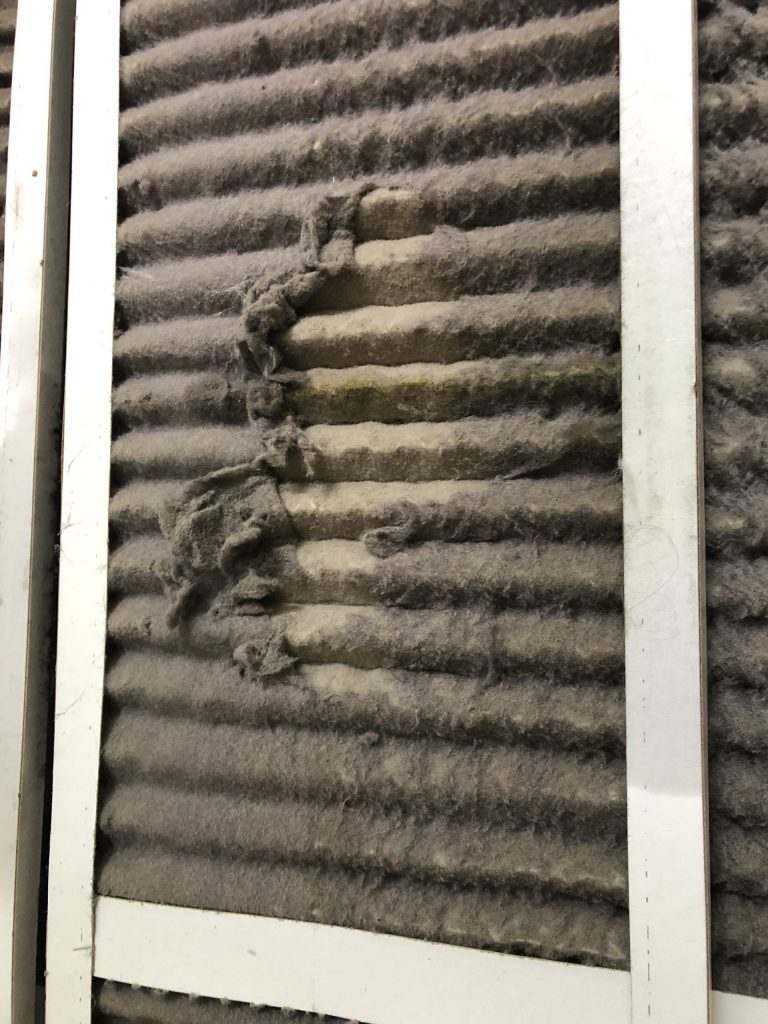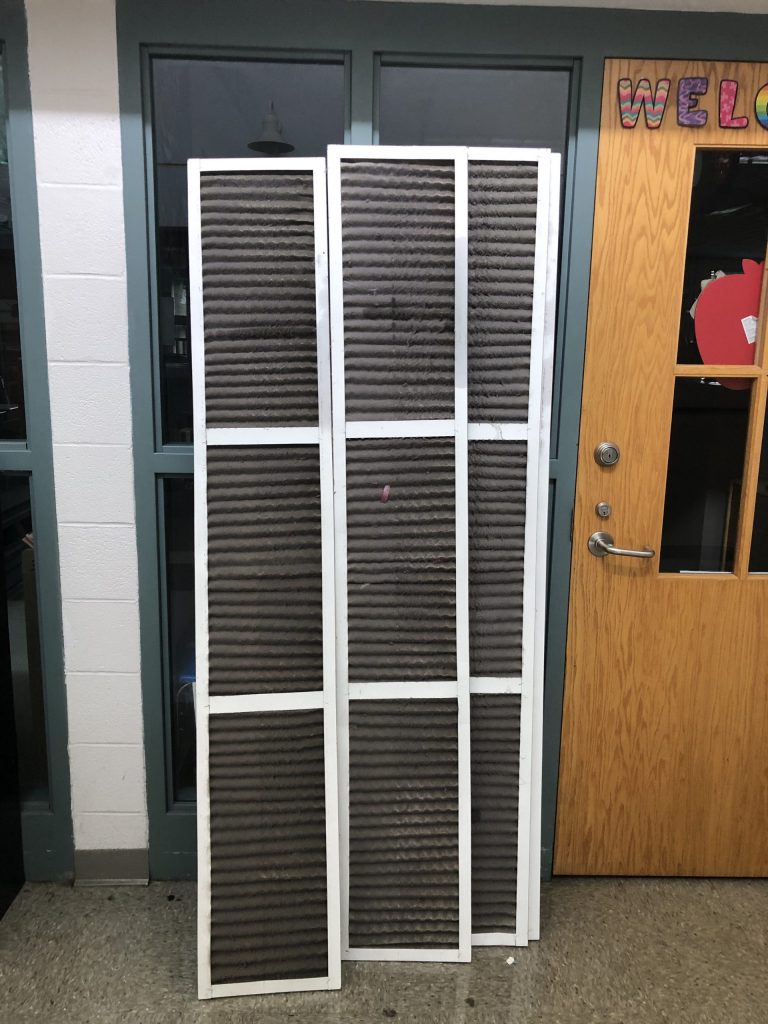By. Frederick Remelius
When my good friend Tracy Enger at the U.S. Environmental Protection Agency (EPA) referred me, a 40-year veteran of facilities management, to do an article for Green Schools National Network about how I planned to handle COVID-19 at Pennsylvania’s Upper Merion Area School District (UMASD), I immediately said “YES!” After I clicked send, I thought “OMG Fred, you idiot, you’re mentally and physically exhausted and just totally frustrated with 2020 – why the heck did you say YES?”
I am a 63-year-old with high blood pressure and thus, a high risk individual for COVID-19. However, my work in the physical building world means I can’t do my job from my home office. My days are consumed with getting my staff, some of whom are older than I, safely back to work as essential workers. Getting my staff and others to simply wear a mask has been a real struggle. We had a meal distribution program that was very time consuming, projects were cancelled, and an unexpectedly violent storm resulted in a five-day districtwide power outage. My inbox requires considerably more time to clean out because I am constantly bombarded with hundreds of emails from vendors who have the most outlandish solutions to all of my COVID-19 ills.
The point of my rant is that I, and probably most of you, simply don’t know how to realistically reopen a totally safe school in the world of COVID-19. The Centers for Disease Control and Prevention’s (CDC) basic six-foot social distancing rule absolutely, positively won’t work in a school like ours that’s focused on hands-on learning, not to mention in extremely dense physical environments like buses and cafeterias, which have been the very basis of school system design for decades. The single most restrictive bottleneck in safely reopening school is the old-fashioned 72 passenger school bus – following CDC guidelines of one student every other row means only six students on a bus!!
Then, there’s the tiny detail of where’s the money coming from to pay for all the ideas, schemes, recommendations, and guidelines to deal with COVID-19. UMASD’s School Board passed its 2020 – 2021 budget on June 1st, and the business administrator immediately froze all expenditures for the 2020 – 2021 school year. The Commonwealth of Pennsylvania will be financially broke shortly and the budget ax will come swinging at my department just as it has in every other economic downturn.
In writing this article I have come to realize that, as a facilities manager, I can’t create COVID-19 free bubbles for every single student and staff member. That realization lifted a great burden off my shoulders because it’s just not within my abilities or job description. So, based on 40 years of experience as a facilities manager, here’s my plan for COVID-19 – I’m going to double down on what I do best as a facilities manager and let the rest of the world decide if they want to come back to school.
These are the items that I’m going to focus on:
- First, I’m going to protect my staff from themselves and each other – per wearing a mask as the primary safety precaution, washing hands secondary. I’m going to keep beating that drum until my staff is deaf!
- I’m going to help protect district employees who have high contact with the general public or lots of students and staff (e.g., front office secretaries, IT technicians, and food service cashiers) by installing sneeze guards.
- Recognize and reinforce the idea with maintenance staff that COVID-19, as with asthma, allergies, and a whole host of other ailments, is an airborne, respiratory problem. This is why good indoor air quality is so very important in K-12 schools where children are often packed close to one another in confined spaces.
- We will purchase and stockpile hospital-grade disinfectants and our custodians will disinfect as many high touch points as often as they can to help stop physical transfer of the virus. (Wall-mounted hand sanitizers are backordered until DECEMBER 2020!)
- Accept that no one is going to give me extra funding to hire more people to do more disinfecting. Instead, we are going to reassign some second-shift custodians to day work so they can dedicate more time doing real-time disinfecting while getting some general cleaning done. I recognize that our level of general cleanliness may suffer because cleaning in the presence of staff and students is not as efficient as working in an empty space.
- We will provide teachers and staff with commercial-grade, pull-up wipes in a bucket (Taski is one brand) filled with hospital-grade disinfectant so they (not students) can disinfect high touch surfaces in their classrooms and work spaces during the day.
- We are going to aggressively push principals, teachers, and staff to really declutter their classrooms and work spaces. Over the years many classrooms, especially in elementary schools, become filled with filing cabinets (this is the electronic age folks), bookshelves, storage totes, rocking chairs, bean bags, couches, carpet squares, horded art supplies, etc., etc., etc. It gets to the point where all custodians can do in some cases is just empty the trash and run away. One silver lining from COVID-19 is the opportunity to force teachers and staff to shovel out their spaces so we can be clean and disinfect efficiently.
- UMASD took advantage of the shutdown to double down and follow EPA Tools for Schools guidelines on cleaning and disinfecting. Now, we are looking to boost our performance of preventive maintenance on HVAC systems. (FYI, a study published by Jones Lang LaSalle, Determining the Economic Value of Preventive Maintenance, shows the return on investment from preventive maintenance programs can be a much as 545%, which is greater than any financial or energy efficiency program that a school district can invest in.) Below are two pictures of a 20-year-old univent after our staff finished cleaning, disinfecting, and performing preventive maintenance on it – it looks brand new – do yours? If not – get busy.
Below are two pictures of some air filters that came out of the univents. They are kind of embarrassing to share because they clearly needed to be changed. We will address that by stressing that some preventive maintenance absolutely can’t be delayed. However, note that these are high-quality MERV 8 filters that are still in good condition – they trapped a lot of material that was not subsequently breathed into children’s lungs. The minimum filter standard in a school should be MERV 8 – please don’t use cheap fiberglass or wiremesh-type filters, which allow lots of particles, dust, dirt, and bacteria to pass right through.
I most strongly believe that EPA’s Tools for Schools guidance is the gospel on how to maintain our buildings in response to COVID-19, as well as the day-to-day indoor air quality problems that seem to plague our buildings. Here are three links I highly recommend:
- Creating Healthy Indoor Air Quality in Schools
- EPA Supports Healthy Indoor Environments in Schools During COVID-19 Pandemic
- Indoor Air Quality Tools for Schools: Preventive Maintenance Guidance Documents
In summary, my responsibility as a K-12 school facilities manager is to provide users (re: students, teachers, administrators, and staff) with a clean, well-maintained, and healthy building. That’s my plan for how to deal with COVID-19. What’s yours?
Author Bio
Frederick P. Remelius has over 40 years of experience in facilities management. He is currently employed as Director of Operations at Upper Merion Area School District in Pennsylvania. There, Fred oversees a $12 million+ budget for transportation, food services, utilities, custodial, grounds, maintenance, and capital project management and manages a staff of 130+ full- and part-time district and contract employees. Under Fred’s leadership, the district has implemented cutting-edge technologies, such as robotic cleaners, and reduced its energy consumption by 40%, saving over $500,000 per year.

